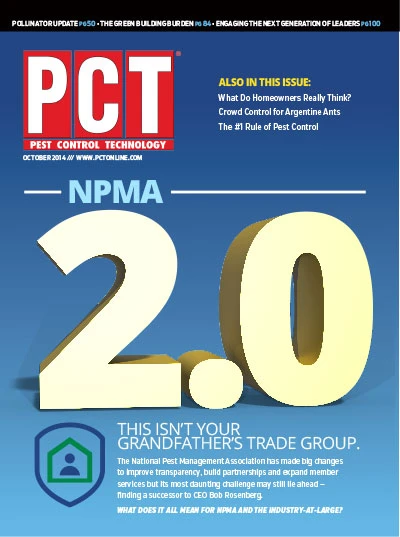 Earlier this year, the Cook family, owners of Cook’s Pest Control, Decatur, Ala., unveiled the theme and concept for the new Cook Museum of Natural Science.
Earlier this year, the Cook family, owners of Cook’s Pest Control, Decatur, Ala., unveiled the theme and concept for the new Cook Museum of Natural Science.
In the 1960s the original Cook’s Natural Science Museum began with a few “bug collections,” primarily as an educational tool for employees of the pest control business. During the 1970s, John Cook Sr. took the growing collection of insects and mounted wildlife on the road to share with a wider audience. In 1980, the demand to see the collection had grown to the point that a permanent museum was constructed in Decatur, Ala., and opened to the public. By 2013, the museum grew to include more than 1,200 specimens and extensive collections of insects, mounted birds and animals, rocks and minerals, and seashells and corals. Since 1980, the museum has welcomed more than 750,000 visitors.
The Future.
The board of directors for the museum — led by Brian Cook, chief administration officer at Cook’s Pest Control and the fourth-generation of the family in the business — began discussing how to carry the legacy of the museum into the future to appeal to a new generation. The result will be a new facility with expanded exhibits and services. The name of the new non-profit organization is the Cook Museum of Natural Science; it will be located in downtown Decatur.
The new 57,000-square-foot facility will be constructed on a 2.3-acre campus with a footprint 11 times that of the original museum. Market research conducted by America’s Research Group, Orlando, Fla., shows an anticipated attendance the first year of 214,000 people, not including school groups.
The Mission.
The Cook Museum of Natural Science has the mission to engage, excite and educate visitors of all ages about the natural created world around us. Museum Board President Brian Cook stated, “The theme of the museum is, ‘Life is Amazing.’ We will include interactive, hands-on and experiential exhibits to engage our visitors in learning.”
Educational programs are central to the museum’s mission. Schelly Corry was hired as executive director to facilitate that goal. Corry has nearly 20 years of experience in the nature and science field, most recently working for the Perot Museum of Nature and Science in Dallas, Texas. One of her specialties is developing engaging science-based curricula and educational programs in a wide range of content areas for preschoolers to college students. “Schelly is passionate about sharing nature and science with others. That characteristic, combined with her expertise in the natural science museum arena, makes her an ideal fit to help us transform the vision my grandparents began 34 years ago into the future,” Cook said.
Key Exhibits.
Visually, the exhibits will draw visitors in to explore the natural world. Live animal aquarium displays will feature animals from around the world, including a tarantula, working beehive and bearded dragon lizard. Saltwater aquariums in the ocean exhibit will display jellyfish, tropical reef fish and coral. Visitors also will learn how shells are made and used by sea life.
Expected to be a favorite of school children is the winding, underground explorer’s cave exhibit with rocks, minerals and other creatures found in that environment. An experiential walk-through environment showcasing wildlife such as a beaver, raccoon and migratory waterfowl will be highlighted in the Tennessee Valley Rivers and Streams area. The Southeastern U.S. hardwood forest exhibit will be an environment especially designed for children and will feature a tree walk where kids can climb, explore and discover wildlife such as an owl, squirrel and woodpecker. In addition to the exhibits, a café with free Wi-Fi is designed to attract visitors, downtown workers and area college students. Two classrooms will host a variety of programs that will appeal to children from preschool to high school.
The board of directors for the Cook Museum of Natural Science is currently developing opportunities for businesses, foundations and individuals to financially contribute to and support the new 501(c)3 non-profit museum. The project’s total estimated cost is $15 million, with the Cook family committing $7 million.
Based on a favorable capital campaign initiative, ground breaking will be in April 2015 with the grand opening in the first quarter of 2017. The project’s development can be followed on the cookmuseum.org website.
WANT MORE?
Enter your email to receive our newsletters.

Explore the October 2014 Issue
Check out more from this issue and find your next story to read.
Latest from Pest Control Technology
- Envu Introduces Botanical-Based Insecticide to Treat Mosquitoes
- Massey Services' Ed Dougherty Announces Retirement
- Cook's Pest Control Brandon Martin Uses First Responder Training to Save Customer's Life
- VPMA Board Member RJ Mitchell Publishes Children's Book
- NPMA Shares Resources for National Pest Management Month
- Fieldster Launches New Next-Generation Mobile App
- Coalmarch Announces Transition to Private Ownership
- Termatrac Introduces iTraker Pro






